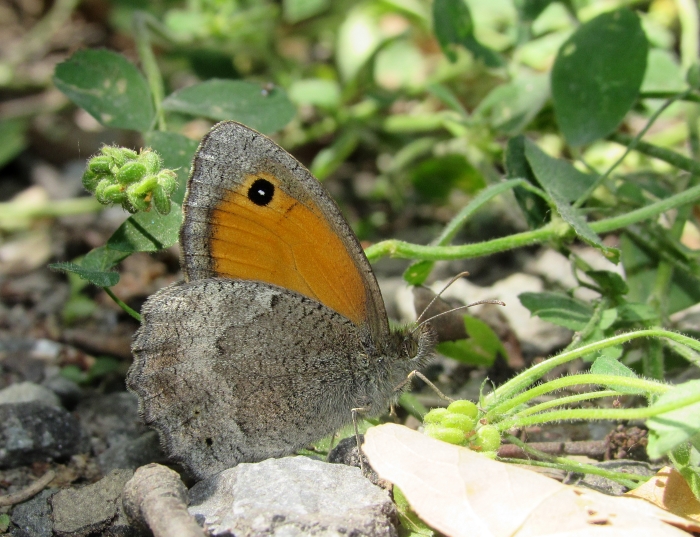
Male, Switzerland, June 2018

Male, Italy, July 2018

Female, Italy, July 2014

Female, Italy, July 2015

Female, Italy, July 2015

Glimpse of the upperside of a male, showing the blind apical ocellus,
Italy, July 2018

Female, Switzerland, July 2006

Female, Switzerland, July 2006

Female, Switzerland, July 2006

Male, Switzerland, July 2006

Female, Switzerland, July 2006

Male (I think), Switzerland, July 2006

Distribution - populations are very scattered in parts of this
distribution, so the map gives a misleading impression
The dusky meadow brown
flies in hot,
grassy, rocky places, and where found may be very numerous, gathering
in groups on nectar sources just like its relative, the meadow brown.
In my experience, however, it is quite local, and is absent from many
seemingly suitable places within its range. It usually comes on the
wing a little later than the meadow brown and stops flying earlier,
making it a creature of the hottest part of the year.
Separation from the meadow brown is usually easy. It is on average
slightly smaller and never - ever - settles with the uppersides of the
wings showing. Therefore, as soon as a butterfly spreads its wings a
moment to bask, you know it is not this. The female has two eyespots on
the forewing underside, though the lower one is only visible when the
forewing is held up and not dropped below the hindwing. When visible,
the second eye is definitive. The male has just one eyespot beneath the
forewing. Both sexes have a dark line bordering the grey submarginal
region of the forewing underside, separating this from the orange
interior. This line is usually distinct and is much less marked in the
meadow brown. Much more similar to the dusky meadow brown is the
oriental meadow brown (which despite its name is found in Iberia and
the south of France as well as south-eastern Europe). If a male
upperside is glimpsed or photographed (for example, by fliming a
butterfly taking off), the narrow sex brand of the dusky meadow brown,
disrupted at the veins, is distinctive. Otherwise, identification is
tricky. The oriental meadow brown is said to have more scalloped
hindwings, but looking at photographs (I have yet to see the species in
the flesh) I find this an unreliable feature. Dusky meadow browns
sometimes have distinctly scalloped hindwings.
Larval foodplants are grasses, including fescues and brome grasses. It
is the caterpillars which hibernate, the adult butterflies flying in a
single generation from June to August.



















